Alex Constantine - May 5, 2009
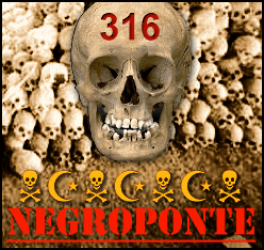 by Gary Cohn and Ginger Thompson
by Gary Cohn and Ginger Thompson
Baltimore Sun
11 Jan 1995
Torture at CIA Battalion 316: The Record of Washington's New "Ambassador" to Iraq
BATTALION 316. Part 1 of 4 (Excerpt)
Unearthed: Fatal Secrets When a wave of torture and murder staggered a small U.S. ally, truth was a casualty. Was the CIA involved? Did Washington know? Was the public deceived? Now we know: Yes, Yes and yes.
TEGUCIGALPA, Honduras - The search for Nelson Mackay Chavarria - family man, government lawyer, possible subversive - began one Sunday in 1982 after he devoured a pancake breakfast and stepped out to buy a newspaper.
It ended last December when his wife, Amelia, watched as forensic scientists plucked his moldering bones from a pit in rural Honduras. Spotting a scrap of the red-and-blue shirt her husband was wearing the day he disappeared, she gasped: "Oh my God, that's him!"
Along with Amelia Mackay, the nation of Honduras has begun to confront a truth it has long suspected - that hundreds of its citizens were kidnapped, tortured and killed in the 1980s by a secret army unit trained and supported by the Central Intelligence Agency.
The intelligence unit, known as Battalion 316, used shock and suffocation devices in interrogations. Prisoners often were kept naked and, when no longer useful, killed and buried in unmarked graves.
Newly declassified documents and other sources show that the CIA and the U.S. Embassy knew of numerous crimes, including murder and torture, committed by Battalion 316, yet continued to collaborate closely with its leaders.
In order to keep U.S. dollars flowing into Honduras for the war against communism in Central America, the Reagan administration knowingly made a series of misleading statements to Congress and the public that denied or minimized the violence of Battalion 316.
These are among the findings of a 14-month investigation in which The Sun obtained formerly classified documents and interviewed U.S. and Honduran participants, many of whom - fearing for their lives or careers - have kept silent until now.
Among those interviewed were three former Battalion 316 torturers who acknowledged their crimes and detailed the battalion's close relationship with the CIA.
U.S. collaboration with Battalion 316 occurred at many levels.
* The CIA was instrumental in training and equipping Battalion 316. Members were flown to a secret location in the United States for training in surveillance and interrogation, and later were given CIA training at Honduran bases.
* Starting in 1981, the United States secretly provided funds for Argentine counterinsurgency experts to train anti-Communist forces in Honduras. By that time, Argentina was notorious for its own "Dirty War," which had left at least 10,000 dead or "disappeared" in the 1970s. Argentine and CIA instructors worked side by side training Battalion 316 members at a camp in Lepaterique, a town about 16 miles west of Tegucigalpa.
* Gen. Gustavo Alvarez Martinez, who as chief of the Honduran armed forces personally directed Battalion 316, received strong U.S. support - even after he told a U.S. ambassador that he intended to use the Argentine method of eliminating subversives.
* By 1983, when Alvarez's oppressive methods were well known to the U.S. Embassy, the Reagan administration awarded him the Legion of Merit for "encouraging the success of democratic processes in Honduras." His friendship with Donald Winters, the CIA station chief in Honduras, was so close that when Winters adopted a child, he asked Alvarez to be the girl's godfather.
* A CIA officer based in the U.S. Embassy went frequently to a secret jail known as INDUMIL, where torture was conducted, and visited the cell of kidnap victim Ines Murillo. That jail and other Battalion 316 installations were off-limits to Honduran officials, including judges trying to find kidnap victims.
The exact number of people executed by Battalion 316 remains unknown. For years, unidentified and unclaimed bodies were found dumped in rural areas, along rivers and in citrus groves.
Late in 1993, the Honduran government listed 184 people as still missing and presumed dead. They are are called "desaparecidos," Spanish for "the disappeared." Mackay is the first person on the list to be found and identified. The discovery of an identifiable body has enabled prosecutors to try to bring his killers to justice.
To this day, the events in Honduras have been little noticed, an obscure sideshow to a highly publicized struggle in the region. They came about as the Reagan administration was waging war against a Marxist regime in Nicaragua and leftist insurgents in El Salvador.
Honduras, a U.S. ally, was used by Washington as the principal base for its largely clandestine effort. Keeping Honduras secure from leftists was Battalion 316's mission.
"I think it is an example of the pathology of foreign policy," said Jack Binns, a Carter appointee as ambassador to Honduras who served from September 1980 through October 1981. "The desire to conduct a clandestine war against Nicaragua out of Honduras made us willing to go beyond turning a blind eye and made us willing to provide assistance to people doing these things even though we knew they were doing them."
Elliott Abrams, former assistant secretary of state for human rights and humanitarian affairs from December 1981 to July 1985, when he was appointed assistant secretary of state for inter-American affairs, vigorously defends the Reagan policy.
"Disappearing people - murdering people, was not the policy of the United States. Nor was it our policy to avert our eyes," Abrams said.
Abrams and other Reagan administration officials said that while fighting communism was the primary goal, they encouraged military leaders in Central America to curtail human rights abuses. In contrast to the Carter administration, which had emphasized human rights in crafting foreign policy, they tackled the issue privately, Abrams said.
"A human rights policy is not supposed to make you feel good," he said. "It's supposed to do some good in the country you're targeting."
No one was safe
Some of the victims of Battalion 316 were subversives, involved in such crimes as bombings and robberies. Nelson Mackay, an easy-going man of Australian descent, had many friends in the military. But he was suspected of arranging gun sales to a radical student group.
Many others were kidnapped and killed for exercising the same freedoms that the United States said it was fighting for in Latin America. Victims included students demonstrating for the release of political prisoners, union leaders who organized strikes for higher wages, journalists who criticized the military regime and college professors demanding fair tuition for the poor.
Among the kidnapped were 14 who described their treatment in interviews with The Sun. Nine said members of Battalion 316 clipped wires to their genitals and sent electric currents surging through their bodies.
"They started with 110 volts," said Miguel Carias, an architectural draftsman who was held captive with Nelson Mackay for a week in 1982. "Then they went up to 220. Each time they shocked me, I could feel my body jump and my mouth filled with a metal taste."
Former members of Battalion 316, interviewed in Canada where they are living in exile, described how prisoners were nearly suffocated with a rubber mask wrapped tightly around their faces. The mask was called "la capucha," or "the hood." Women were fondled and raped, the torturers said.
The body of Mackay, who was 37 years old and the father of five, showed signs of other tortures.
Farmers who found Mackay's body in 1982 and later buried it reported that his hands and feet were tied with rope and a noose was around his neck. A black liquid spilled from his mouth. The farmers recognized the substance as "criolina," a thick, black liquid rubbed on cattle to kill ticks and mites.
Stalking the victims
Before being kidnapped and tortured, suspects were stalked by Battalion 316.
Jose Valle, a former battalion member now in Canada, describes a typical surveillance: "We would follow a person for four to six days. See their daily routes from the moment they leave the house. What kind of transportation they use. The streets they go on."
Once the battalion determined the time and place an individual was most vulnerable, the person was kidnapped, often in daylight by men in black ski masks. They ambushed their victims on busy streets, then sped off in cars with tinted windows and no license plates.
The prisoners of Battalion 316 were confined in bedrooms, closets and basements of country homes of military officers. Some were held in military clubhouses at locations such as INDUMIL, the Military Industries complex near Tegucigalpa.
They were stripped and tied hand and foot. Tape was wrapped around their eyes.
Those who survived recall interrogation sessions that lasted hours. Battalion members shouted obscenities, accused them of being terrorists, and told them they would never see their families again if they did not answer questions and confess.
Milton Jimenez, former leader of a radical leftist student group, endured such interrogation. He and several college housemates were kidnapped by military police on April 27, 1982. When Jimenez refused to answer questions, he said, the officers told him they were going to kill him. "They said they were finishing my grave. . . . I was convinced that I was going to die."
They stood him before a firing squad. They aimed their guns at him, promising that it was his time to die. But they never fired.
Eventually, he was released.
"They never accused me of anything specific," said Jimenez in an interview in Tegucigalpa, where he is now a lawyer. "They said they knew I was a terrorist and they asked, 'Who are your friends?'"
Simple methods
There was nothing sophisticated about the torture employed by Battalion 316. In addition to la capucha - a piece of rubber cut from an inner tube that prevents a person from breathing through the mouth and nose - they used rope to hang victims from the ceiling and beat them, and extension cords with exposed wires for shock torture.
Gloria Esperanza Reyes, now 52, speaking in an interview at her home in Vienna, Va., describes how she was tortured with electric wires attached to her breasts and vagina. "The first jolt was so bad I just wanted to die," she said.
Jose Barrera, a former battalion torturer interviewed in Toronto, recalls such pleas from prisoners. "They always asked to be killed," he said. "Torture is worse than death."
Battalion 316 got its early training from Argentines, who had been invited to Honduras by General Alvarez, himself an honors graduate of the Argentine Military Academy.
"The Argentines came in first, and they taught how to disappear people. The United States made them more efficient," said Oscar Alvarez, a former Honduran special forces officer and diplomat who was the general's nephew.
"The Americans ... brought the equipment," he said. "They gave the training in the United States, and they brought agents here to provide some training in Honduras.
"They said, 'You need someone to tap phones, you need someone to transcribe the tapes, you need surveillance groups.' They brought in special cameras that were inside thermoses. They taught interrogation techniques.
"The United States did not come here and say kill people," he added. "I never saw any efforts by the United States to create death squads."
General Alvarez's chief of staff, Gen. Jose Bueso Rosa, also describes the U.S. role in developing the battalion. "It was their idea to create an intelligence unit that reported directly to the head of the armed forces," he said. "Battalion 316 was created by a need for information. We were not specialists in intelligence, in gathering information, so the United States offered to help us organize a special unit."
(In 1986, Bueso was convicted in U.S. District Court in Miami of participating in a failed drug-financed plot to kill former Honduran President Roberto Suazo Cordoba.)
In the United States and in Honduras, the CIA trained members of the unit in interrogation and surveillance, former Battalion 316 members and Honduran officers said.
The training by the CIA was confirmed by Richard Stolz, then-deputy director for operations, in secret testimony before the Senate Select Committee on Intelligence in June 1988.
In testimony declassified at The Sun's request, Stolz told the committee: "The course consisted of three weeks of classroom instruction followed by two weeks of practical exercises, which included the questioning of actual prisoners by the students.
"Physical abuse or other degrading treatment was rejected, not only because it is wrong, but because it has historically proven to be ineffective," he added.
He confirmed that a CIA officer visited the place where 24-year-old Ines Murillo was held during her captivity.
Interviews with members of Battalion 316 confirm Stolz's testimony: The CIA taught them to apply psychological pressure, but not physical torture. But former battalion members and victims say the CIA knew that torture was being used.
Florencio Caballero, a former battalion member, recalls the instruction and the reality.
"They said that torture was not the way to obtain the truth during an interrogation. But Alvarez said the quickest way to get the information was with torture," he told investigators of the Senate intelligence committee.
The Senate investigators interviewed Caballero in Canada as part of the same investigation in which Stolz testified.
In an interview with The Sun, Oscar Alvarez also recalls the reality.
"What was supposed to happen was that the intelligence unit would gather information and take it to a judge and say, 'Here, this person is a guerrilla, and here's the evidence," he said. "But the Hondurans did not do that." Slashing his finger across his neck, he said, "They took the easy way."
And, he said, "U.S. officials did not protest."
Mark Mansfield, a spokesman for the CIA, said: "As a matter of policy, we don't comment on liaison relationships." But, he added, "The notion that the CIA was involved in or sanctioned human rights abuses in Honduras is unfounded."
A man, a mission
When Alvarez took command of the Honduran armed forces in 1982, at the age of 44, Washington had a man ideally suited to its mission to combat Communist insurgency in Central America.
"Gustavo Alvarez was very much out of national character - dynamic, firm, uncompromising," said Donald Winters, CIA station chief in Tegucigalpa from 1982 to 1984. "He knew where he wanted to go."
Alvarez was the son of a high school principal who made him recite poetry to overcome a stutter. But his preferred reading was military history. He so admired Germany's "Desert Fox" of World War II, Field Marshal Erwin Rommel, that he named one of his sons Erwin and another Manfred, after Rommel's son.
General Alvarez made no secret about his belief that terror and violence were the only ways to deal with subversives. As commander of the national police force known as Fuerza de Seguridad Publica (FUSEP), he had already created an intelligence unit that would become known as Battalion 316.
On Feb. 6, 1981, while still FUSEP commander, but already selected as head of the Honduran armed forces, he told Binns of his admiration for the way the Argentine military had dealt with subversives and said that he planned to use the same methods in Honduras.
The U.S. ambassador was shocked. In an urgent cable to superiors in Washington, he described the conversation:
"Alvarez stressed theme that democracies and West are soft, perhaps too soft to resist Communist subversion. The Argentines, he said, had met the threat effectively, identifying - and taking care of - the subversives. Their method, he opined, is the only effective way of meeting the challenge.
"When it comes to subversion, [Alvarez] would opt for tough, vigorous and Extra-Legal Action," Binns warned.
Four months later, Binns was outraged to learn of the violent abduction and disappearance of Tomas Nativi, a 33-year-old university professor and alleged subversive. Nativi was dragged from his bed on June 11, 1981, by six men wearing black ski masks, according to witnesses and a 1993 Honduran government report.
He has not been seen since and is presumed dead.
In his cable on the incident to Washington, the ambassador said: "I believe we should try to nip this situation in the bud. I have already asked [CIA] chief of station to raise this problem obliquely with ... Alvarez (whose minions appear to be the principal actors and whom I suspect is the intellectual force behind this new strategy for handling subversives/criminals)."
Falling on deaf ears
Binns recommended that the U.S. government act to stop the military violence by threatening to withhold military aid. "Those suggestions drew a thunderous silence from Washington," he said in a recent interview at his home in Tucson, Ariz. "My message was not a message anyone wanted to hear."
The Reagan administration had made it clear that it would diminish the criticism of human rights abuses by its allies in places such as Central America where it wanted to go on the offensive against the Communist threat.
Thomas O. Enders, former assistant secretary of state for inter-American affairs and a chief architect of the early Reagan strategy, described the change of policy in a recent interview in New York, where he is a managing director of Salomon Brothers Inc., an investment banking firm.
"We didn't think that we could effectively sustain the resistance to the guerrillas in Central America without being willing to give significant public support to their governments," Enders said.
"We were afraid that the approach that had been adopted by the Carter administration, which was highly critical of them and would result in their demoralization, would fail to convince the Soviet Union or the Salvadorans, Hondurans and others that we really meant business."
In the Reagan strategy, Honduras, which the United States had used before to advance its objectives in Central America, was ideally located between Nicaragua and El Salvador. General Alvarez seemed an ideal partner.
"Alvarez was a darling of the Reagan administration," said Cresencio S. Arcos, U.S. Embassy press spokesman from June 1980 to July 1985 and ambassador to Honduras from December 1989 to July 1993.
While General Alvarez's star was rising, President Reagan was issuing orders for an aggressive, largely secret thrust against communism in Central America.
By March 9, 1981 - after less than two months in office - Reagan signed a presidential "finding" that ordered the expansion of covert operations authorized by the Carter administration, to "provide all forms of training, equipment, and related assistance to cooperating governments throughout Central America in order to counter foreign-sponsored subversion and terrorism."
On Dec. 1, 1981, he ordered the CIA to work primarily through "non-Americans" against the Sandinistas in Nicaragua and leftist insurgents in El Salvador.
The "non-Americans" were to include Argentines, paid for by the CIA, Enders said in an interview last month. He said there did not seem to be any alternative to using the Argentines, despite their poor record on human rights.
"There were not many people with counterinsurgency experience," Enders said. "How many people were there who were Spanish speakers? [Human rights] was obviously a concern, but when we got through looking at it, we didn't see that we had any clear choice." ...
http://www.globalresearch.ca/articles/COH405A.html
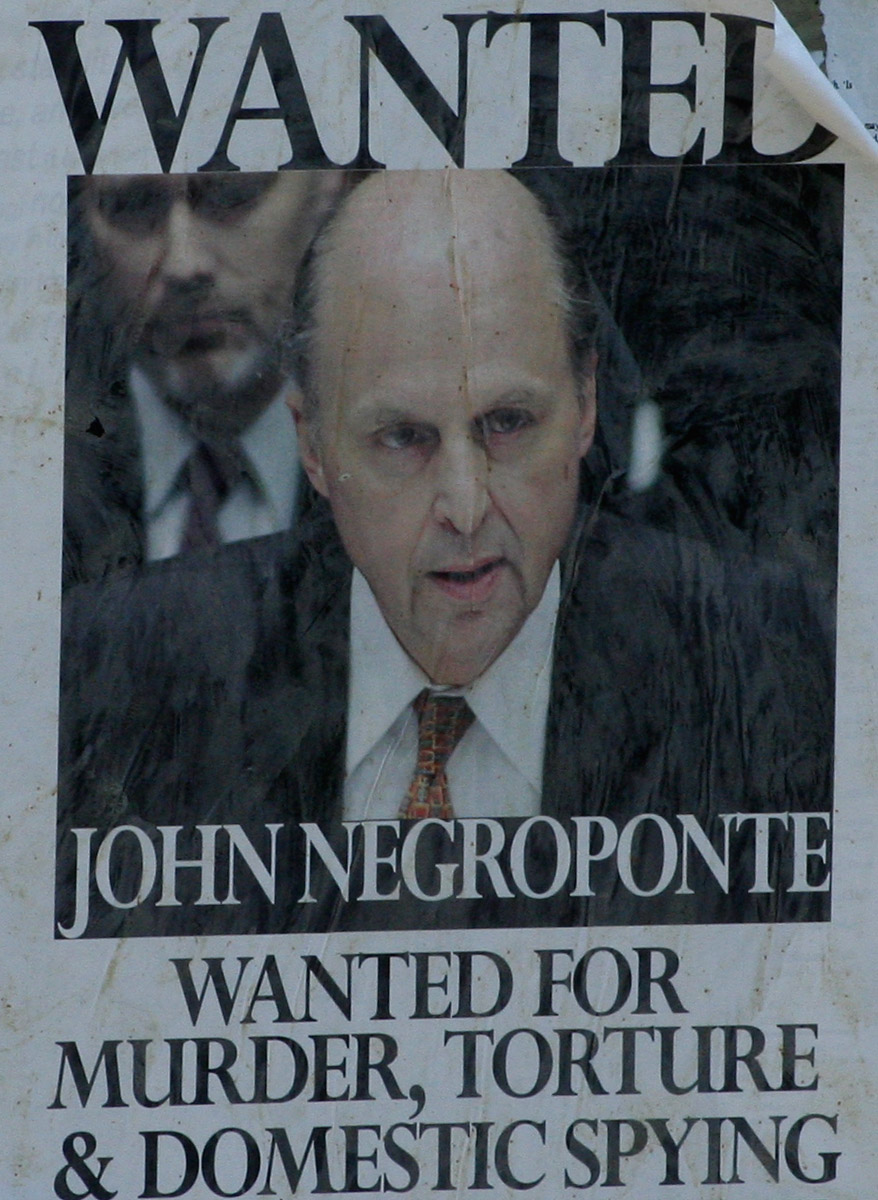
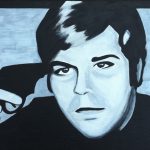
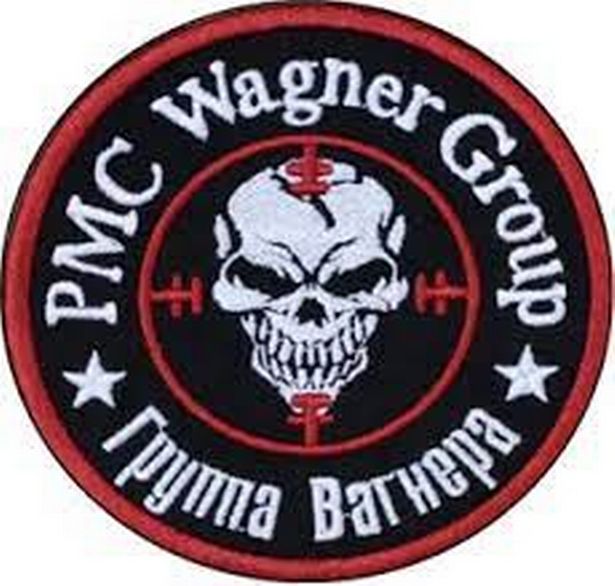




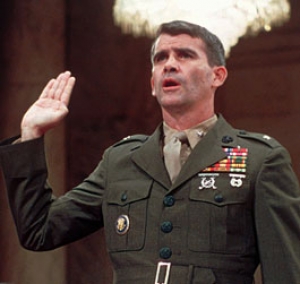

As a psychiatrist in Seattle in the eighties and nineties, I had the extremely difficult task of working with a priest who was arrested and brutally tortured – over many years – by Pinochet. My client had deep painful scars all over his body. Yet the biggest regret of his life was that because of his vow of poverty (and lack of financial resources) the only country willing to take him was the one that had put Pinochet in power. Fortunately the good Father was still alive when Pinochet was first arrested in the UK. If he were still alive, I know he would be most pleased to learn that Pinochet’s henchmen, at least, are finally being prosecuted.
“Father Roy: Inside the School of Assassins,” a documentary I produced that was on many PBS stations, is about a Vietnam war hero turned priest, and his struggle to find and reveal the truth about the secret CIA torture training facility where Jose Valle–quoted in this article–was trained, along with thousands of other Latin America military.